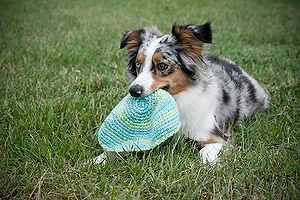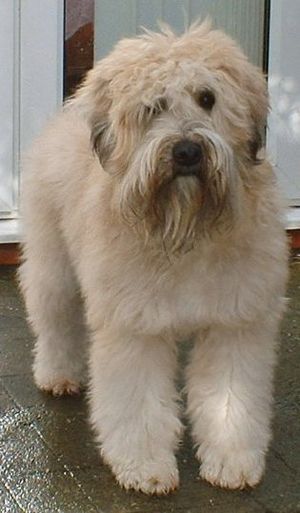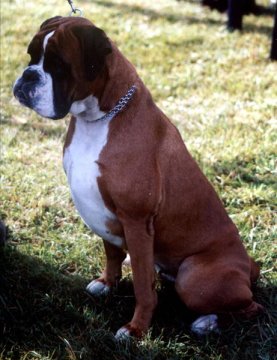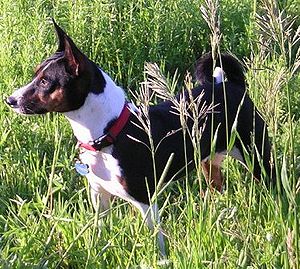 |
| Vital Statistics: |
| Place of Origin: United States |
| Group: Herding |
| Height: toy-10-14 in., mini-14-18 in. |
| Weight: teacup-under 12 lbs.; toy-12-17 lbs.; mini-20-40 lbs. |
| Life span: 12-13 yrs. |
| Trainability: high |
| Good with children: yes |
| Good with other pets: yes |
What is the origin of the Miniature American Shepherd?
These minis look exactly like the Australian Shepherd, only smaller. Originating in the United States, they are a very versatile breed, willing to take on any job asked of them. It is also known as the American Shepherd or the Miniature Aussie Shepherd.
What does the Miniature American Shepherd look like?
There are 3 sizes of Miniature American Shepherds. The teacup is under 12 lbs. The toy is 10-14 inches tall and weighs 12-17 lbs. The mini is 14-18 inches tall and weighs 20-40 lbs. Ears are folded down. Eye colors are brown, amber, blue, marbled (a combination of colors). The coat is medium-long with a mane and feathering on the legs. The coat can be straight or slightly wavy. Colors are black, red, red merle, blue merle. They can have varied copper trim and white markings which may or may not be present. Brush when necessary to keep neat and clean.
What is the temperament of the Miniature American Shepherd?
The Mini American Shepherd is highly intelligent, protective and energetic. They respond to positive training and learn quickly. As with all dogs, early training and socialization is recommended. The mini will adapt to any lifestyle but loves to work and play. They can be reserved with strangers but accepting when guided by the family’s feelings. The MAS is often referred to as a “velcro dog” because of it’s need to keep the family always in it’s sights and their complete devotion to the family. They love children and get along with other pets. However since they are a herding breed, they will try to herd them. The MAS can live in an apartment as long as they have daily vigorous exercise and walks.
What are the Miniature American Shepherd uses?
The versatility of the MAS can be seen as they compete in obedience, rally, agility, herding, fly ball, frisbee and work at search and rescue and as therapy dogs. These affectionate, loyal dogs are wonderful companions.
Possible Health Issues
Eye problems, deafness, sensitivity to some drugs.
- Australian Cattle Dog
- Australian Kelpie
- Australian Shepherd
- Bearded Collie
- Beauceron
- Belgian Sheepdog – Groenendael
- Belgian Tervuren
- Bergamasco
- Berger Picard
- Blue Lacy
- Border Collie
- Bouvier des Flandres
- Briard
- Cardigan Welsh Corgi
- Catahoula Leopard Dog
- Collie
- English Shepherd
- Entlebucher
- Finnish Lapphund
- German Shepherd
- Hovawart
- Icelandic Sheepdog
- Laika
- Lancashire Heeler
- Mudi
- Old English Sheepdog
- Pembroke Welsh Corgi
- Polish Lowland Sheepdog
- Puli
- Pumi
- Pyrenean Shepherd
- Shetland Sheepdog
- Standard Schnauzer
- Swedish Vallhund
- Alaskan Klee Kai
- Alaskan Malamute
- American Cocker Spaniel
- American Eskimo Dog
- American Foxhound
- American Pit Bull Terrier
- American Stratfordshire Terrier
- Australian Shepherd
- Bichpoo
- Black and Tan Coonhound
- Blue Lacy
- Boston Terrier
- Boykin Spaniel
- Carolina Dog
- Catahoula Leopard Dog
- Chesapeake Bay Retriever
- Chinook
- English Shepherd
- Maltipoo
- Mi Ki
- Mountain Cur
- Plott Hound
- Rat Terrier
- Redbone Coonhound
- Redtick Coonhound
- Silken Windhound
- Toy Fox Terrier
- Treeing Tennessee Brindle



